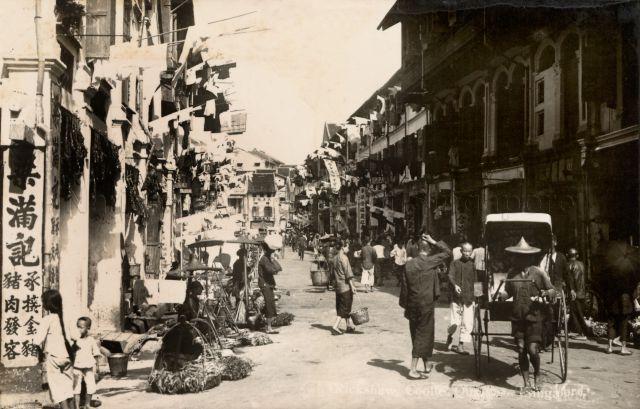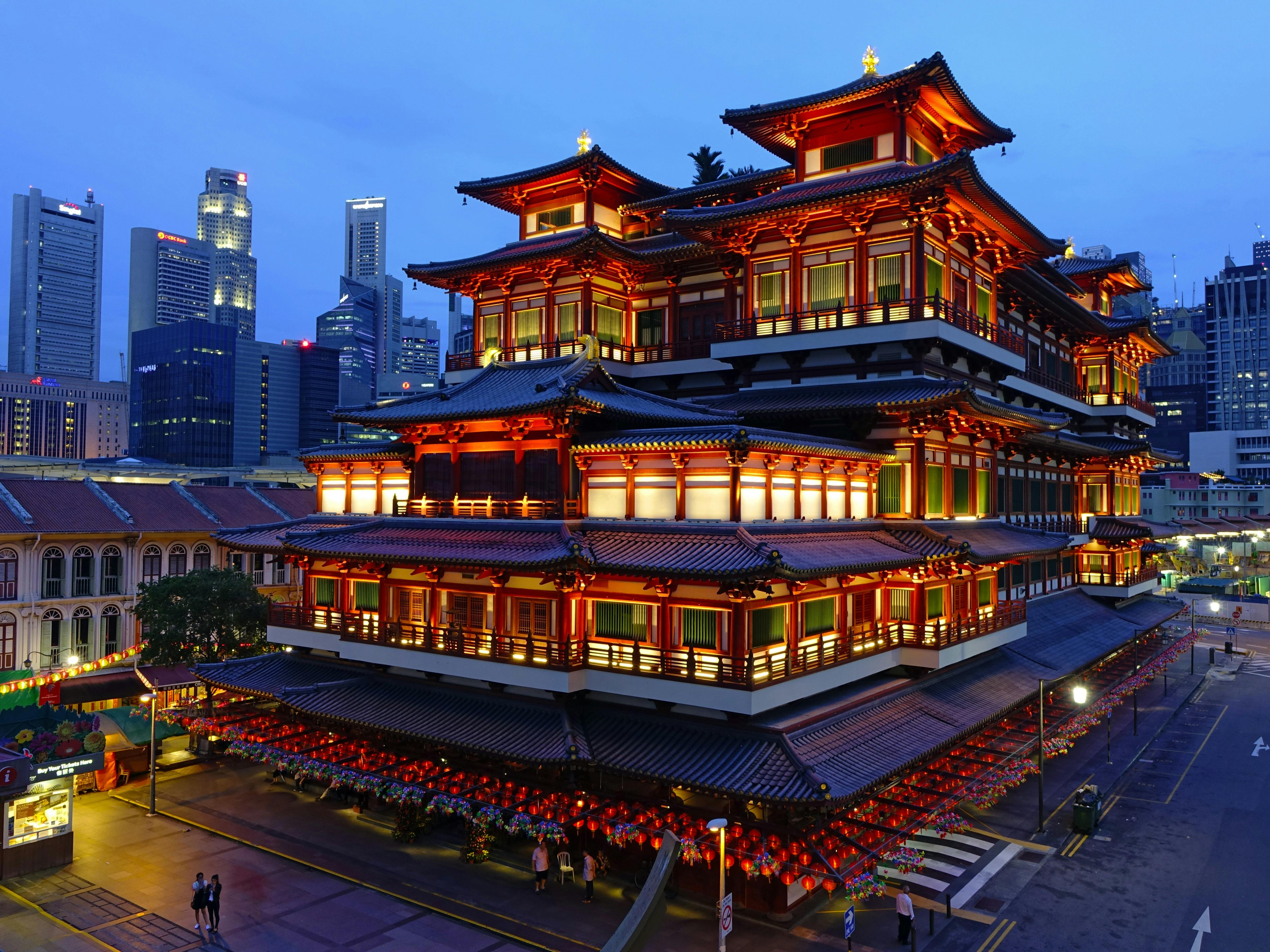Chinatown

Image: Street scene of Temple Street in Chinatown in the 1920s, with a rickshaw in the foreground. National Archives of Singapore.
From its humble beginnings as a settlement for early Chinese immigrants to the vibrant hub it is today, Chinatown remains a neighbourhood rich in resilience, culture, and community.
Chinatown’s story began in 1843, when land leases and grants were issued to early Chinese immigrants to build homes and trade spaces. Over time, streets like Pagoda, Smith, and Trengganu grew into bustling centres of commerce and daily life. Lined with shophouses that doubled as homes, businesses, and clan associations, these streets came alive with traders selling everything from textiles to traditional medicines, while hawkers lined the roads with pushcarts offering local delicacies.
Chinatown is a melting pot of cultures. While predominantly shaped by Chinese immigrants, the area was also home to other communities. Indian merchants too, set up businesses near the junction of South Bridge Road and Upper Cross Street, dealing in textiles, spices, and daily essentials. Mosques like Jamae Mosque, stand alongside Hindu temples like Sri Mariamman Temple, reflecting the rich tapestry of cultures and faiths that have coexisted in Chinatown for generations.
The population in Chinatown grew. By the late 1980s, Chinatown’s four sub-districts — Bukit Pasoh, Kreta Ayer, Telok Ayer, and Tanjong Pagar — were given conservation status. Major upgrades in the 1980s led to the creation of new developments like Kreta Ayer Complex to house street hawkers.
Chinatown continues to hold its unique charm, where traditions and modern developments coexist in harmony. 🌟
+++++
What comes to mind when you think of Chinatown?
The iconic shophouses, of course — rich in history and architectural style. From the 1840s to the 1960s, these shophouses along Keong Saik Road, Smith Street, and Telok Ayer, housed family-run businesses — shop in the front, home on top. These shophouses are adorned with intricate Peranakan tiles, ornate wooden shutters, and decorative façades inspired by Chinese, Malay, and European influences.
Today, some of these beautifully restored shophouses are home to trendy cafés, boutique hotels, and retail shops, while others retained their traditional trades.
The Buddha Tooth Relic Temple and Museum is a prominent religious and cultural landmark in Chinatown. This a majestic Tang Dynasty-style building was completed in 2007, and houses sacred Buddhist relics and intricate carvings that honour the district’s spiritual and cultural heritage.

While much of Chinatown has evolved, its traditions remain strong. During Lunar New Year and the Mid-Autumn Festival, the streets come alive with vibrant decorations, festive bazaars, and cultural performances — a vibrant blend of past and present that keeps its heritage alive.

